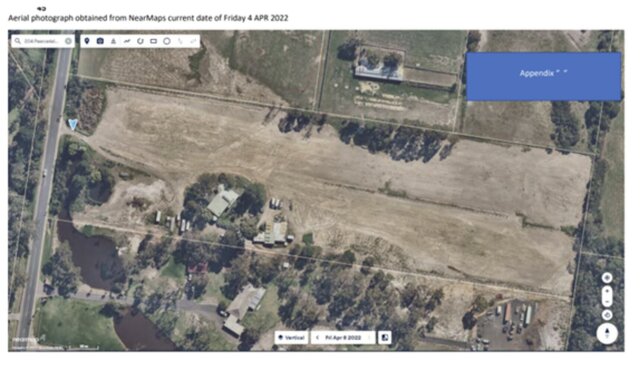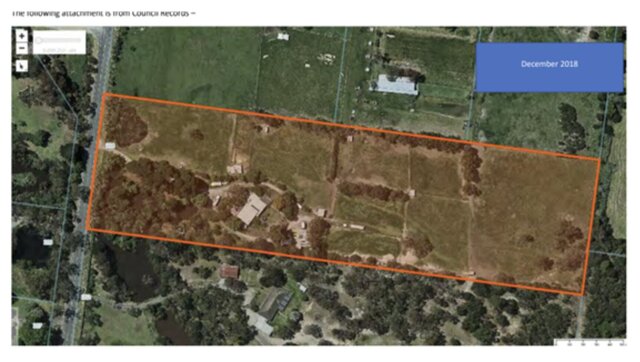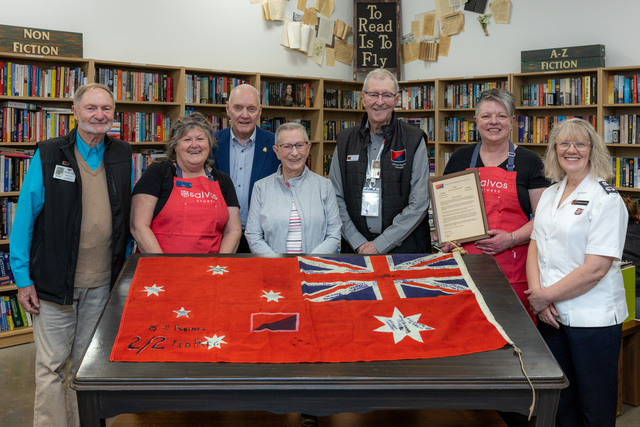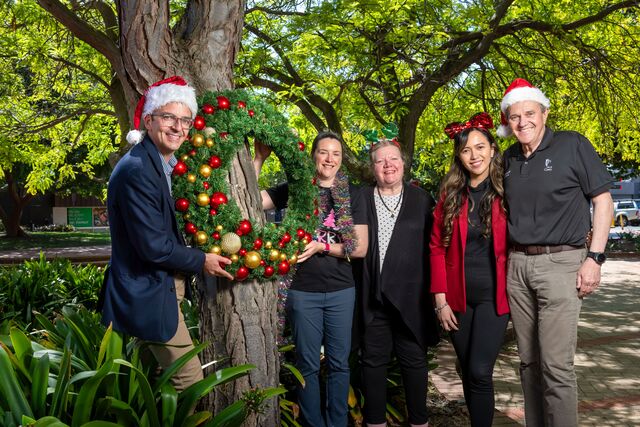A Cranbourne South landowner filled and levelled his land, including parts of the floodplain, and destroyed native vegetation progressively over the years without permits, the state tribunal has heard.
The aerial images from 2018 to 2022, supplied by Casey Council, have shown that it transformed the subject land, which is approximately four hectares at 204 Pearcedale Road, from a strip of green space into reclaimed land.
Casey Council applied for an enforcement order against the landowner, Terrence Daniel White, in front of the Victorian Civil and Administrative Tribunal (VCAT).
It alleged that Mr White contravened the planning scheme by depositing fill onto the land, including parts subject to inundation, and lopping, destroying, and removing native trees and vegetation all without necessary permits.
The council explained that as the land sits in the Green Wedge Zone and the whole frontage to Pearcedale Road is affected by the Land Subject to Inundation Overlay (LSIO), which relates to the nearby Langwarrin Creek, permits are required for earthworks that change the rate of flow or the discharge point of water across property boundary, which satisfies the nature of Mr White’s activities on the land.
It further explained that an Environmental Significance Overlay (ESO) necessitates permits for removing any vegetation on the land, including dead vegetation.
Council’s planning compliance officer John Letchford told the tribunal as a witness that he attended the site six times between March 2019 and May 2020 and observed that heavy vehicles deposited large amounts of fill onto the subject land, including the part affected by the LSIO and the ESO.
Ryan Harris, another witness with the council and a senior natural resources management officer, attended the site once on 17 April 2019 and noted that fill material had been placed on the subject land and there were two piles of vegetation at the rear of the subject land, which contained both exotic and native vegetation.
Melbourne Water, the floodplain manager under the planning scheme, conducted a hydraulic assessment to determine the impact of the importation of fill on the subject land and two adjoining premises.
It examined the impact of floodplain fill-in on the volume of the floodplain loss and flood level.
The assessment submitted that “maintaining floodplain storage is imperative to avoiding flood impacts downstream and to neighbouring properties”.
“The subject site located adjacent to Langwarrin Creek, in addition to being flood prone, provides natural storage for floodwaters, which retards flows and reduces the frequency and duration of floods downstream,” it stated.
“The hydraulic assessment undertaken by Melbourne Water concluded that the importation and levelling of fill on the subject and neighbouring land increases the 1 per cent AEP Flood levels by approximately 100mm on the subject land and 202 Pearcedale Road.”
Norman MacDonald, who represented Mr White in the tribunal, submitted that the earthworks were exempted from the need to obtain a permit because Mr White filled and levelled the subject land to “restore the natural terrain of the subject land to its natural existing condition”, which therefore did not result in any change.
He also argued that Mr White did not destroy any vegetation because the trees still “physically remained on the land”.
He submitted that the vegetation removal was exempted from a permit because Mr White only removed native vegetation that was dead, or was required for personal use, or could present an immediate risk of personal injury or damage to property, or was for constructing internal and boundary fences, or could enable the removal of pest burrows.
The tribunal rejected all of Mr MacDonald’s submissions and ruled that the fill importation and vegetation removal both required permits and were conducted in contravention of the planning scheme.
“I am satisfied that an enforcement order should be made against Terrence White. The progressive importation of fill and levelling of fill on the subject land over a period of years was a deliberate act as was the felling of native vegetation,” the tribunal concluded.
“The change to the existing condition of the land both through the change in ground levels across the subject land and by the removal of large stands of vegetation and trees has significantly changed the landscape and character of the subject land.”
The tribunal also expressed concerns about the quality of the material used to fill the land, which was described as “rubble“ by the council’s witness.
“Unregulated filling of land risks contamination of land through the importation of unregulated material,” the tribunal noted.
The enforcement orders seek to remove the fill material brought onto the land and reinstate vegetation on the subject land.










